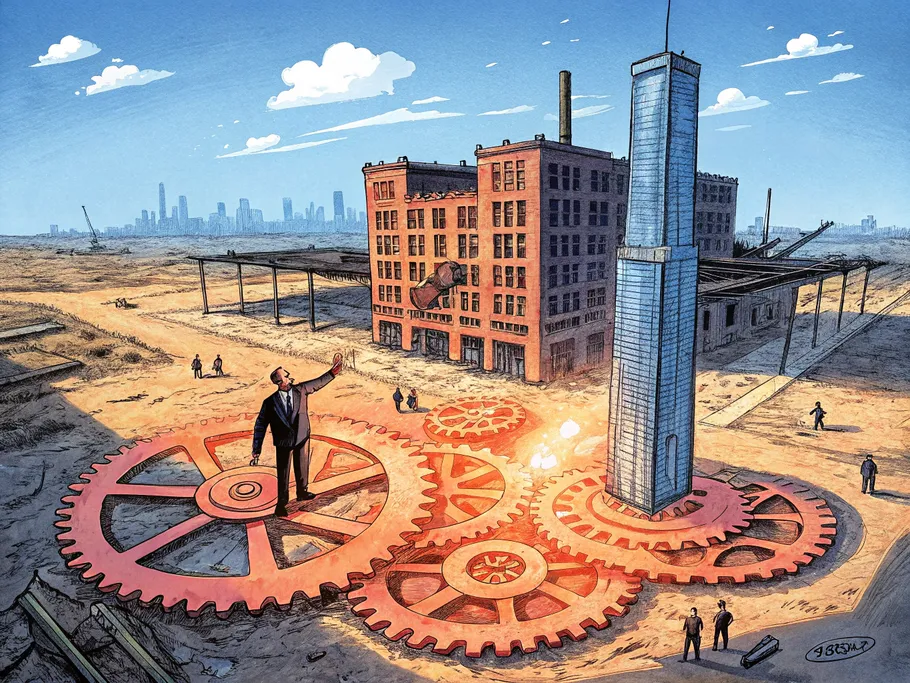Being good at what you do used to be enough. Build a solid product, offer fair pricing, and treat customers right. That checklist got you far until it didn’t.
Today’s market rewards something else entirely: clarity, consistency, and trust. And trust isn’t some soft, aspirational brand value. It’s the real foundation of every sale, partnership, or long-term relationship you’re trying to build.
But building a high-trust business doesn’t mean chasing perfection. It means making smart decisions, small signals, and systems that speak louder than marketing ever could.

So what does that look like in practice?
Let’s dig in.
Most companies try to compete by being louder, flashier, or more present. But the most effective brands don’t shout. They resonate. And that resonance only happens when a brand is deeply aligned with its purpose, audience, and offer.
That’s why positioning isn’t optional; it’s foundational. It informs everything from product design to how your customer support team writes emails.
Strategic consultancies like 360&5 help brands cut through the noise by aligning their business from the inside out. Instead of constantly reinventing the wheel or reacting to competitors, these companies become impossible to confuse.

In a world where everyone’s fighting for attention, being understood quickly is your strongest asset.
Social platforms have changed the way businesses communicate. But they’ve also made it painfully obvious when a brand is out of touch.
What you post reflects how well you understand your audience. What you reply to shows your priorities. Even the silence in your comment section says something.
That’s why a thoughtful social presence is more than content creation. It’s an ongoing relationship with your audience.
Codi Agency works with brands to build that kind of relationship intentionally, consistently, and rooted in what matters to their community. It’s not about frequency for the sake of it. It’s about depth, clarity, and timing.
The question isn’t just “what are we posting?” It’s “What are we building through what we post?”
Trust often gets talked about in big-picture terms, but the reality is it’s earned in moments that seem invisible. The ease of a password reset. How fast does an app open? Whether your users feel in control when something goes wrong.
Singapore’s government offers a good case study here. With its digital identity system, Singpass, millions access everything from medical info to housing support with just a few taps.
The experience of needing to transfer Singpass to a new phone reveals something most users don’t even realize: digital infrastructure can feel seamless and secure.
It’s a reminder that trust lives in UX. It’s not just about what your product does—it’s how it makes people feel while doing it.

A common mistake among startups and growing teams is thinking efficiency can wait. “We’ll invest in that once we’re bigger.” But inefficiency is expensive, and by the time you notice it, the cost has already compounded.
You don’t need bloated software or an enterprise tech stack. But you do need tools that match the speed and ambition of your work.
A team producing high-res video assets, running simulations, or editing real-time data on multiple displays needs machines that keep up. A high-performance laptop like a Razer doesn’t just prevent crashes. It helps preserve creative flow and collaboration.
Momentum is fragile. Good hardware protects it.
There’s a false belief that innovation and compliance can’t live in the same room. But the best organizations know how to build systems that honor both.
In highly regulated fields—like pharma, healthcare, and life sciences—there’s very little room for ambiguity. But that doesn’t mean you can’t move fast. It just means you need the right tools.
Today, companies are using AI software for regulatory document generation and management to streamline approvals, minimize manual bottlenecks, and reduce risk.
This isn’t about replacing people. It’s about clearing the path so the right people can focus on critical thinking instead of chasing paperwork.
Innovation doesn’t mean bypassing the rules. It means building systems that turn constraints into design features.
It’s not always a missed deadline or a dropped call that breaks trust. Often, it’s the quieter signals.
The out-of-sync project brief. The forgotten email. The awkward moment when a client has to repeat themselves for the third time.
Inconsistent execution erodes confidence over time. And worse, it’s hard to trace. Teams start second-guessing, clients start micromanaging, and internal morale takes a hit.
Building a culture of follow-through, documentation, and clear expectations isn’t sexy. But it’s what separates businesses that scale well from those that fall apart under pressure.
What looks like “attention to detail” is really a deeper signal: this company respects your time.
Most brand promises are broken internally before they ever get broken externally.
If your team doesn’t trust leadership, if values aren’t clear, if communication feels reactive—those dynamics show up in how you treat customers, too.
Culture isn’t about ping pong tables or free snacks. It’s about the systems, rituals, and decision-making habits that keep everyone rowing in the same direction.
And when done right, a strong culture does more than improve retention. It turns employees into brand advocates, problem solvers, and active participants in growth.
You can’t fake this. Either your culture supports trust or it erodes it. There’s no in-between.
High-trust businesses don’t talk about trust. They demonstrate it.
It shows up when your proposal is delivered on time, without needing a nudge. When your billing is accurate the first time. When your customer support listens instead of reciting scripts.
It’s visible in your UI, your contracts, your tone of voice, and your hiring decisions. And it’s felt long before someone becomes a customer, or long after.
Trust isn’t a branding tactic. It’s the outcome of thousands of quiet, intentional choices. And when you build it right, you won’t need to chase growth. People will want to work with you because they already believe in you.
No fireworks required.

Email subscription is available ONLY TODAY (oh, okay, and tomorrow).
Surely, we respect your inbox! Unsubscription works every day.

We’d love to tailor your experience — which of these best describes you?